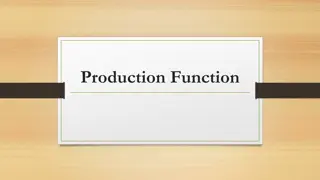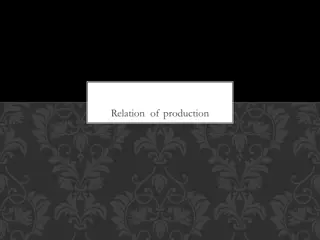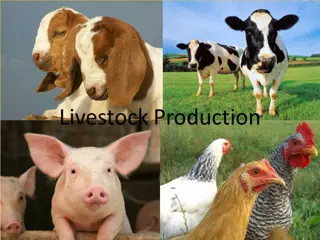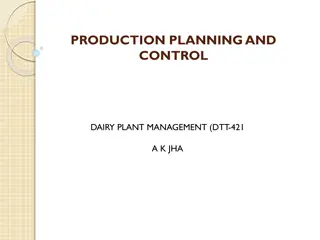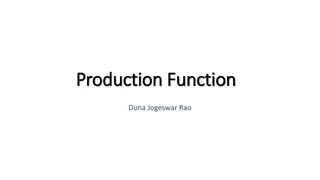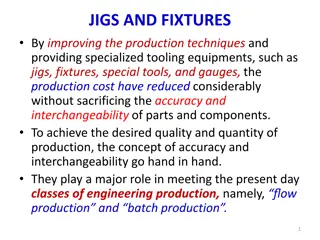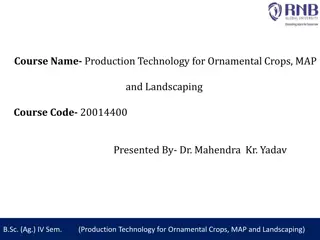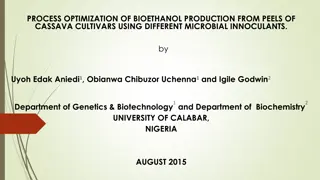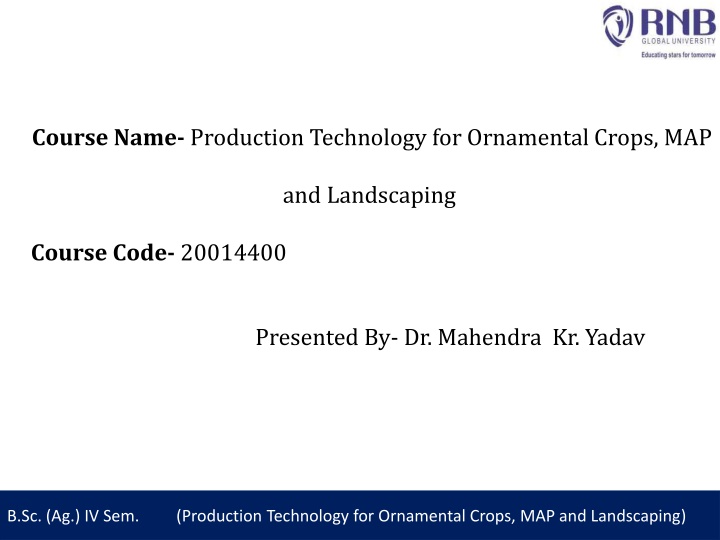
Production Technology for Ornamental Crops and Geranium Cultivation
Explore the production technology for ornamental crops, including geranium cultivation. Learn about the uses, varieties, and cultivation practices of geranium, a popular aromatic plant used in perfumery and cosmetics. Understand the soil requirements, climate conditions, and popular varieties for successful geranium cultivation.
Download Presentation

Please find below an Image/Link to download the presentation.
The content on the website is provided AS IS for your information and personal use only. It may not be sold, licensed, or shared on other websites without obtaining consent from the author. If you encounter any issues during the download, it is possible that the publisher has removed the file from their server.
You are allowed to download the files provided on this website for personal or commercial use, subject to the condition that they are used lawfully. All files are the property of their respective owners.
The content on the website is provided AS IS for your information and personal use only. It may not be sold, licensed, or shared on other websites without obtaining consent from the author.
E N D
Presentation Transcript
Course Name- Production Technology for Ornamental Crops, MAP and Landscaping Course Code- 20014400 Presented By- Dr. Mahendra Kr. Yadav B.Sc. (Ag.) IV Sem. (Production Technology for Ornamental Crops, MAP and Landscaping)
Course Objectives Identify different types of ornamental and medicinal crops. Examine various principles of landscaping, uses of landscape trees, shrubs and climbers, production technology of important ornamental crops, etc. Determine about Demonstrate various Package of practices for loose flowers and their transportation, storage house and required condition for cut and loose flower. Construct about the various problems with the production technology of medicinal and aromatic plants. Importance of Processing and value addition in ornamental crops and MAPs produce. B.Sc. (Ag.) IV Sem. (Production Technology for Ornamental Crops, MAP and Landscaping)
Production technology of geranium B.Sc. (Ag.) IV Sem. (Production Technology for Ornamental Crops, MAP and Landscaping)
Production technology of geranium Botanical Name : Pelargona graveolens Family : Geraniaceae Chromosome No. : 2n = 2x = 28 Origin : South Africa Plant Part use -Terminal stem with 6-12 leaves Chief constituents are Geraniol (68-75%)and citronellol (23-24%) Oil demand is 40-50 tonnes per year. Internal production is only 20 tonnes. So, India import geranium oil at higher cost B.Sc. (Ag.) IV Sem. (Production Technology for Ornamental Crops, MAP and Landscaping)
Uses: Widely used in perfumery and cosmetic industries due to its agreeable and very profound rose like odour. In expensive soaps, perfumes. Used for production of Rhodinol which forms part of most high grade perfumes. Tannins obtained as a byproduct from stems and leaves after extraction of oil. Types of geranium 1. Rose geranium: 2. Ornamental geranium: only use as ornamental plant In rose geranium two types 1. Algerian or Tunician: Produce dark pink flower, Not suitable for wet soil, Grown in Nilgiri hills 2.Bourbon or Reunion: Produce light pink colour flower, Suitable for wet soil, Oil quality is superior. B.Sc. (Ag.) IV Sem. (Production Technology for Ornamental Crops, MAP and Landscaping)
Soil: A deep light porous well drained soil rich in organic matter and acidic in reaction with a pH 5.5 to 6.0 is suitable. Climate: 1. Mild climate Opt. Temp: 20-25 oC. 2. Resistant to drought. 3. Susceptible to frost. Varieties Kodaikonal-1, Hemanti, Kunti, Algerian, Reunion, IIHR-8, are the popular varieties under cultivation. B.Sc. (Ag.) IV Sem. (Production Technology for Ornamental Crops, MAP and Landscaping)
Method of Propagation: Terminal Stem cutting. Period : November Geranium is propagated by stem cuttings. Cuttings of about 10 15 cm are taken from current season growth with a well formed crown of leaves with 3 - 4 nodes and terminal bud. Dipping basal portion of the cuttings in 200 ppm of IBA increase the rooting efficiency. Cuttings planted in raised nursery beds will be ready for planting with in 60 days. B.Sc. (Ag.) IV Sem. (Production Technology for Ornamental Crops, MAP and Landscaping)
Planting Time: June- July / Dec.- Jan. 30,000 cutting / ha is needed In close planting: 45 x45 cm maintained PP: 57,000/ha gives higher herbage yield Spacing: Transplanted on ridges and furrows. Spacing: 45 x45 cm. Weeding: Weeding is necessary for the first 2-3 months till the planting material get established. Earthing up: done up to 4 months B.Sc. (Ag.) IV Sem. (Production Technology for Ornamental Crops, MAP and Landscaping)
Manures and fertilizers farm yard manure at about 10-20 tonnes per ha 40-60 Kg : N, P2O5 and K2O per hectare as basal dose 200 kg N: in 6 split doses for top working. Irrigation For healthy crop growth it should be irrigated frequently. Weekly interval in summer is required for good yield. Pruning Pruning of the bushes is necessary when the bush shows signs of decline. The branches are cut back leaving 15 - 20 cm once in 4 - 5 years. Plant protection Pests Nematode: To control the nematodes (Meloidogyne hapla) in nursery, apply Carbofuran at 2 kg a.i./ha once in 6 months in June and December. B.Sc. (Ag.) IV Sem. (Production Technology for Ornamental Crops, MAP and Landscaping)
Diseases Wilt: Drench with Carbendazim 1 g/lit at monthly intervals. Harvesting: First harvest: 4-6 months after planting Maturity indices: Apperance of flowers Leaves turn light green in colour with lower leaves turning yellow Lemon like odour of leaves changes to that of rose. Harvesting once in 3-4 months Yield : Herbage : 20 - 25 t/ha Oil yield : 20-30 kg/ ha B.Sc. (Ag.) IV Sem. (Production Technology for Ornamental Crops, MAP and Landscaping)

